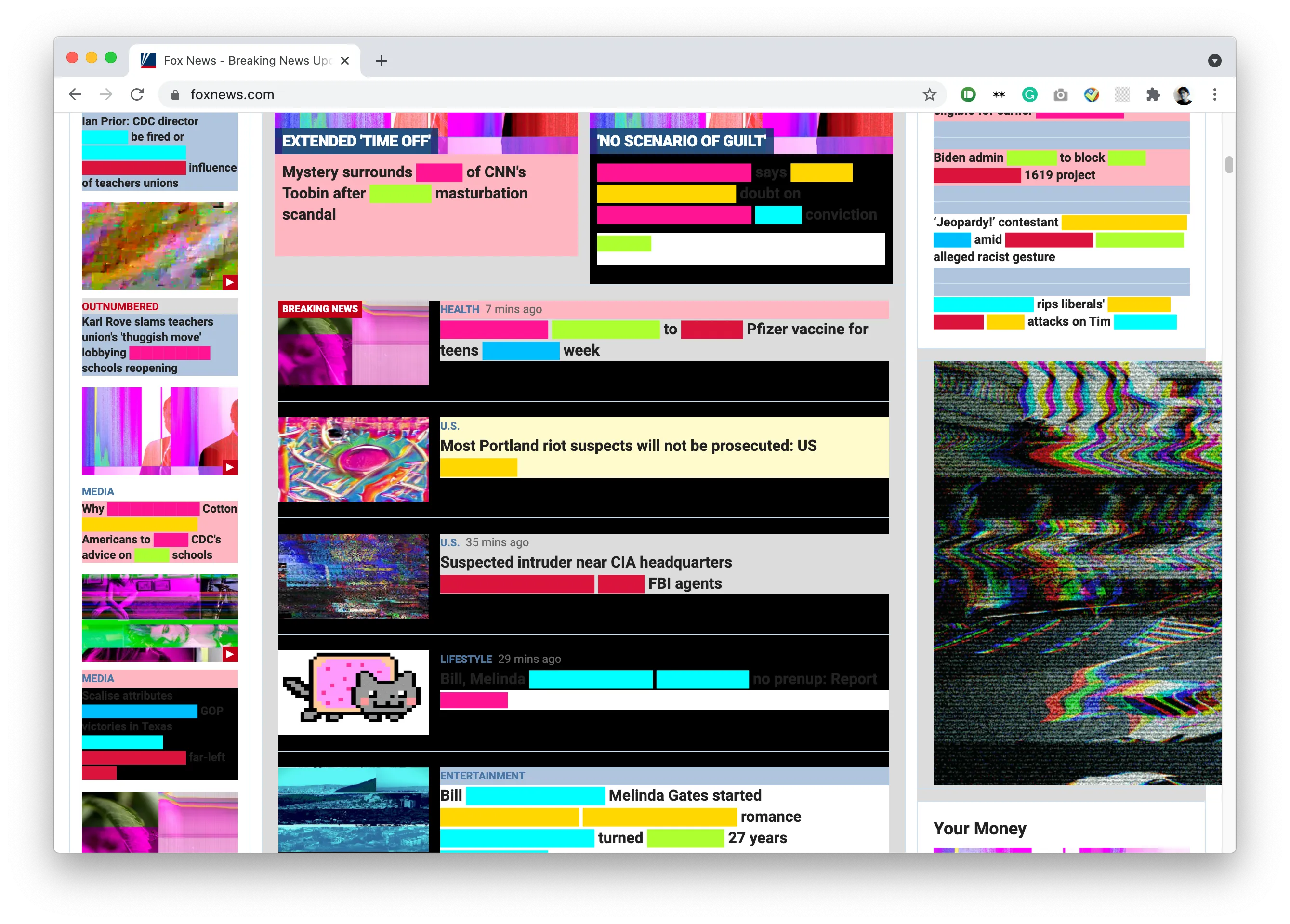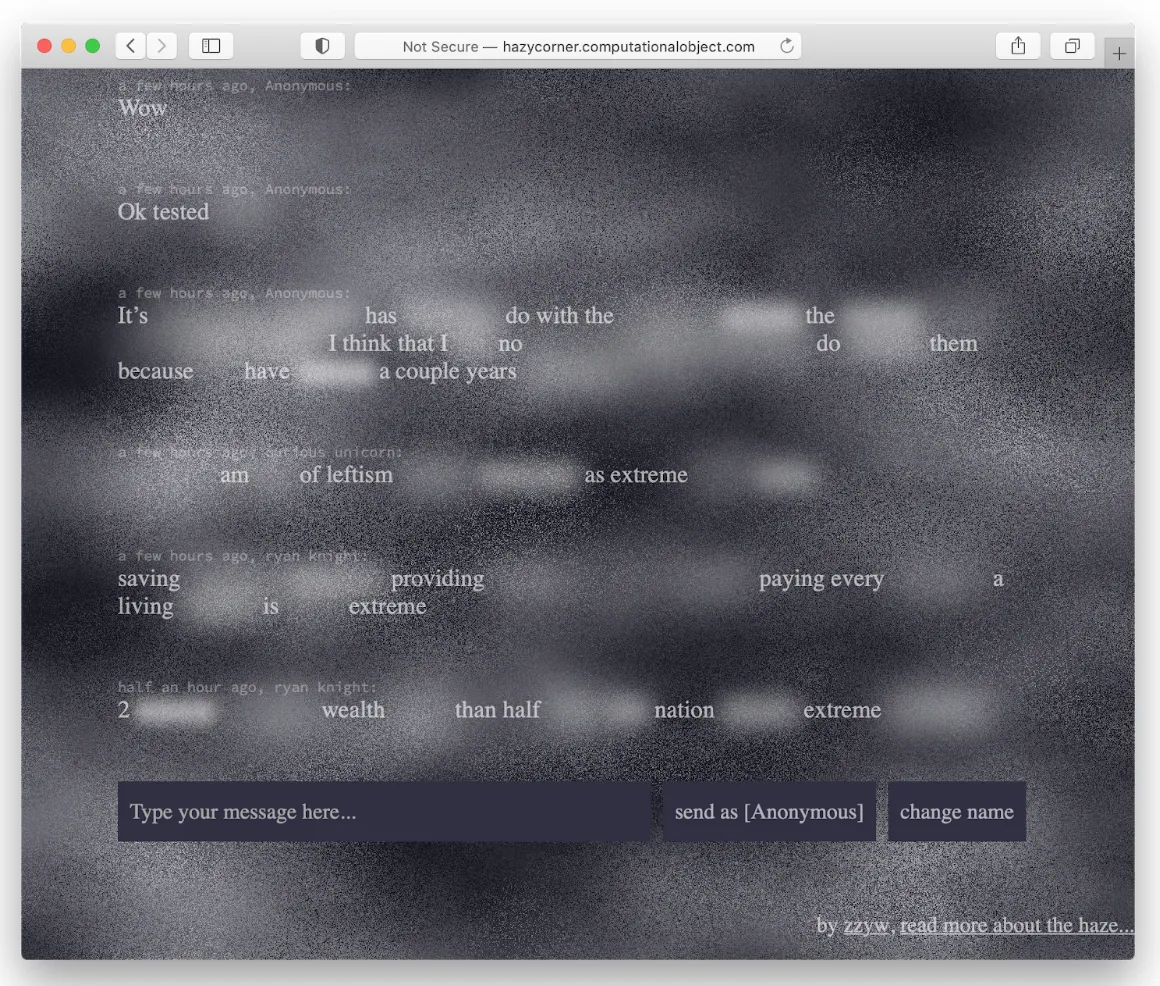The Hazy Machine
2024
Many of our past works critique the dominant schemes of designing and developing computing systems, as we hold the view that computing systems are increasingly becoming the mediating layer between us and reality. As a result, the most important design challenge in our age is the reexamination of our computing systems, as any societal change cannot be complete without it. Hubert Dreyfus (1929-2017, American philosopher) pointed out that one must look into the ontological, epistemological, and psychological assumptions of computation and question their limits and legitimacy.
The algorithmic sphere today, the Internet at large, is largely constituted by software that follows the input-output model. The logic of this model is mechanical and linear in nature, where an input is provided, and an output is returned in a vacuum of context, devoid of any contextual, environmental, and self-reflective activity. Technically, this approach is frequently implemented in the form of API requests, such as server endpoints handling backend GET, POST, and PUT requests. While this mode of computing has been widely adopted and has proven to be effective for many applications, it has limitations in terms of its capacity to break free from the limitation of its inherent design — its potential to sublate and form higher logic functions, making it more subject to control and cybernetic engineering, a perfect tool seized by the interests of capitalism and becoming the go-to approach to implement control in the age of decentralization.
Brian Cantwell Smith (Professor of Information, University of Toronto) provided an updated assessment of the development of AI in his 2019 book “The Promise of Artificial Intelligence: Reckoning and Judgment.” He proposes that AI, insofar as it wants to be intelligent, must develop a different scheme to interact with the world. Walter Freeman (1927-2016, American neuroscientist) developed research into the way that actor and environment are coupled. Freeman shares Dreyfus’s view of anti-representationalism: “the brain moves beyond the mere extraction of features … it combines sensory messages with past experience … to identify both the stimulus and its particular meaning to the individual.” Freeman denounced representationism, and Smith’s notion of the world can be reformulated in practical terms as “context,” in the sense that, when entering a new environment, an intelligence determines what is happening and its relevance to itself.
Context depends on the objects present in an environment, but its totality is not the sum of their descriptions. As philosopher Martin Heidegger (1889-1976) stated, “the world worlds,” meaning that every object contributes to the manifestation of the world. Context is determined in the encounter between the intelligent agent and the objects, with their worlds and intentionality recursively informing each other.
We propose an experiment for a new sort of algorithmic machine server that goes beyond the current model of the question-answer paradigm. We do not intend for these experiments to be the answer to the problems we have outlined prior, but they should pose an opening to what is currently absent in our society of algorithms. A request sent to an endpoint on the server should not only be processed in isolation within the scope of the request but should take historical and contextual information into consideration. To translate it into technical languages, the function of the endpoint might change from answer to answer because every new request inevitably transforms and alters the nature of the algorithm. The nature of the request should be aware of its own function and the past requests it has processed and returned.
Privacy Considerations One might question the privacy implications of this new proposal, as it might involve mixing and matching different requests and traversing the scope of the request-response stream. We will address these concerns in a separate work. In short, the current discourse surrounding privacy has been largely confined within the neoliberal and capitalist framework and should be reevaluated within a different societal scheme, which this project presupposes. In the context of our proposed algorithmic machine server, which takes historical and contextual information into account, the traditional notion of privacy as an individual’s right to control their personal information may need to be reevaluated. The very nature of this experiment challenges the idea that data can be neatly separated into discrete, individually-owned units.
Work-in-Progress Experimentations
. . . u p d a t i n g …
001 news server
A web server that mixes and matches news upon requests. the server intercepts and modifies the content of news articles in real-time, based on the user’s request and the historical context of previous requests.
By considering the broader context of news consumption and the potential biases inherent in single-source news, this prototype illustrates how an algorithmic system can actively participate in the construction of meaning, rather than merely serving as a passive conduit for information.

002 the hazy chat server
A chat server that explores the evolving nature of algorithmic mediation in digital communication. The piece takes inspiration from the above critiques of the dominant input-output model in computing systems, which can be linear, mechanical, and devoid of context. In the latest iteration of this experiment, the server-side algorithms have been updated to obscure certain words and reshuffle the order of text based on a series of algorithms informed by past chat messages. This means that the processing of each new message is not done in isolation, but takes into account the historical and contextual information of the conversation.
